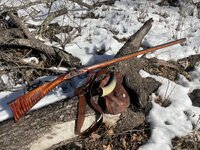HighUintas
WKR
- Joined
- Feb 2, 2020
- Messages
- 4,061
In addition to Olsolitaires lock rec, Chambers and Kiblers locks typically need no tuning. My Chambers lock ... It could use a tuning. I hear of Chambers putting out duds occasionally. Never heard of a Kibler dud. I've heard of quite a few LR dudsThere's a newer one, owned by Rice, which makes high quality (CNC most parts I believe) locks that from the reports I've seen so far, don't really require tuning.
One that will likely high quality when released again, is the Ditchburn lock. I can't remember the owner of the molds though. He's going for all CNC tight tolerance parts.
One that will likely high quality when released again, is the Ditchburn lock. I can't remember the owner of the molds though. He's going for all CNC tight tolerance parts.



